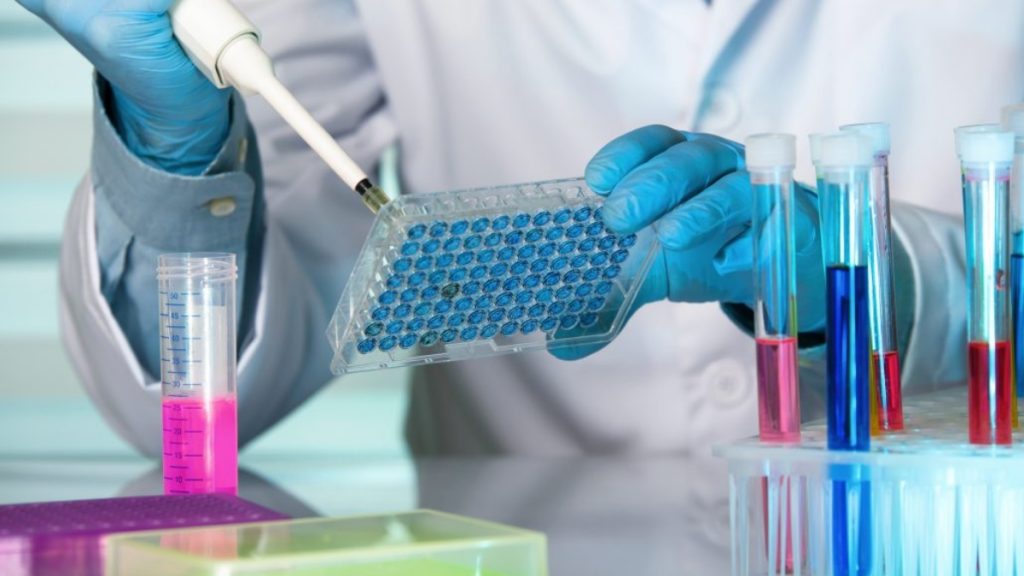The Enzyme-Linked Immunosorbent Assay (ELISA) is a critical analytical method in the life sciences and health industries. Due to its sensitivity and specificity, ELISA has become a valuable asset to scientists aiming to detect or quantify biological materials, including proteins, hormones, antibodies, and antigens. Herein we discuss the basic principles of ELISA, the methodology and variations, as well as its diverse use in diagnostics, research and industry.
What is the ELISA Technique?
The ELISA (enzyme-linked immunosorbent assay) text book is a plate-based assay technique designed to detect and quantify soluble substances. This utilizes the specific interaction between antigens and antibodies, where enzymes conjugated to antibodies create detectable signals, usually via a color change. This allows ELISA to be used as a versatile method for numerous applications, both quantitative and qualitative.
Flexible and high-throughput assays with good reproducibility and moderate cost, The ELISA technique has become widely used in diagnostics, vaccine development, and basic research.
Types of ELISA Techniques
Based on the exact research requirements, there are several formats of ELISA assays:
1. Direct ELISA
Direct ELISA: In direct ELISA, the antigen is directly immobilized on the assay plate. An enzyme-linked primary antibody bound to the by-products of the target antigen which produces signal when substrate treated. Overall, it can be a simple and fast method but lacks sensitivity due to the lack of signal amplification.
2. Indirect ELISA
Indirect ELISA uses two antibodies: an unconjugated primary antibody which binds antibodies to the antigen, and a conjugated enzyme secondary antibody which detects the primary antibody. The format increases sensitivity via signal amplification, ideal for detecting low-abundance targets.
3. Sandwich ELISA
Sandwich ELISA provides high specificity and sensitivity by employing two different antibodies, a capture antibody attached to the plate and a detection antibody that attaches to a different site on the target antigen. This dual-antibody strategy minimizes cross-reactivity and enhances assay specificity.
4. Competitive ELISA
In competitive ELISA, the target antigen within a sample is in competition with a labeled antigen for binding to a specific antibody. Since the signal is inversely proportionate to the antigen concentration, this approach is powerful for the detection of low molecular weight anaesthetics in crude samples.
ELISA Process Steps
Whether it be a direct or indirect ELISA, the procedure involves a few important steps:
Coating: Attachment of the antigen or antibody on the microplate surface.
Blocking: Blocking non-specific binding with a blocking buffer.
Incubation: Introduce the samples, primary antibodies, or enzyme-labeled antibodies for binding
Washing : Separating unbound components to minimize background noise.
Detection: Adding a substrate to generate a signal that can be quantified.
Measurement: Measuring the signal, usually with a microplate reader.
Applications of ELISA
The ELISA method is at the core of biomedical research and diagnostics with applications across a variety of disciplines:
Disease Diagnostics
ELISA is widely employed for the diagnosis of infectious diseases like HIV, hepatitis, and COVID-19. It also helps to discover biomarkers for non-infectious diseases such as cancer and autoimmune diseases.
Vaccine Development
Conversely, ELISA is utilized in vaccine research to measure antibody titers in serum samples, providing data about humoral responses that are important in evaluating vaccine efficacy and safety.
Food Safety
This technique is used in food safety testing for the detection of low levels of allergens, microorganisms and toxic compounds to comply with food regulations to protect the consumer.
Drug Development
Pharmaceutical companies use ELISA to conduct pharmacokinetic studies or for assaying drug concentrations in biological samples. It is also useful for the screening of therapeutic antibodies.
Immunology Research
ELISA is an essential method for measuring cytokines, growth factors, chemokines, and other immune mediators, allowing researchers to dissect immune dynamics.
Reagents: The Key to ELISA Success
Important considerations include the performance of the plate and the methods and reagents that will be utilized which will be mostly determined by the quality of the reagents used in an experiment. Abcam Monoclonal antibodies vary in quality, and poor-quality monoclonal antibodies can lead to unreliable outcomes. These antibodies are optimized for the specific epitopes while having low cross-reactivity and low non-specific binding. Reproducibility is guaranteed by the use of validated reagents, and valuable time spent on optimization efforts is saved for the scientists by the directly accessible HotTaq enzyme.
Advantages of ELISA
Quantitative and Qualitative Readouts: Presents both the identification and magnitude of the target molecule(s).
Scalability: The system can modulate to allow for high-throughput screening, thereby making it ideal for large-scale studies.
Cost-effectiveness: Simpler, cheaper alternative to more sophisticated analytical techniques.
Challenges & Limits
Although ELISA has benefits, it also has the following limitations:
Labour-Intensive Protocols: Multi-step procedures can be time-consuming.
False Positive Risk: Suboptimal reagents or protocols might result in false results.
RPQ—Relative aSSay Prerequisites PFQ—Parallel Reagent-Limited Quality Dependence on these Reagents: The quality of an antibody or substrate can limit the performance of an assay.
Future Perspectives
The method of ELISA is continuously innovating and bringing its usage to new levels. The automated platforms minimize human involvement leading to better efficiency and reproducibility. The multiplex ELISA allows the simultaneous determination of multiple analytes, thus yielding more information from a single sample.
Furthermore, coupling ELISA with other molecular strategies, such as next-generation sequencing and proteomics, allows further studies in these biology fields. The technique’s potential is additionally enhanced by novel reagents, such as engineered antibodies and novel substrates.
Conclusion
Today, ELISAs are one of the most widely used techniques in biomedical research and diagnostics and are valued for their sensitivity, specificity and versatility. As technologies advance, ELISA will remain a critical component in our understanding of biology and global health advancement. February 26, 2023 — Researchers and clinical scientists will benefit from high-quality reagents that incorporate robust methodologies of the highest quality, ensuring the reliability and reproducibility of their results and paving the way towards groundbreaking discoveries.
